If You Notice This On an Avocado, Don’t Eat It, Experts Say
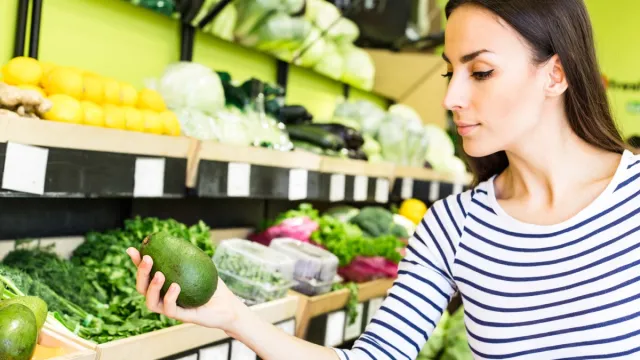
There are few better feelings in the kitchen than when you slice an avocado open to find a ripe, green specimen. Conversely, when you cut one open only to discover that the fruit is already past its prime, the disappointment is all too real. But experts say there’s an even more important reason not to pick the wrong avocados: when they ultimately go rancid, they can be downright dangerous for your health. Read on to learn how to spot a spoiled avocado to slash your risk of a problem.
RELATED: If You’re Over 65, Never Do This With Your Produce, Experts Say.
If your avocado is brown under the stem area, don’t eat it.
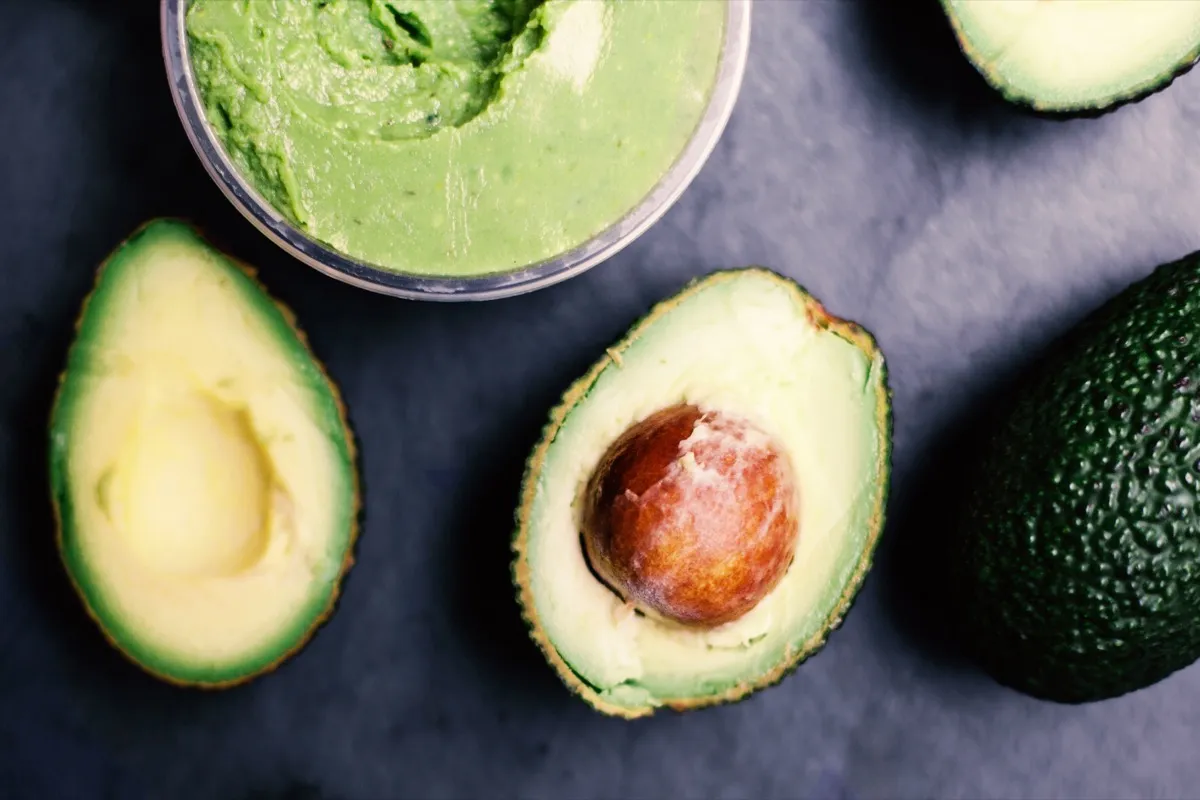
More concerning than the risk of ruining your dinner is the risk of getting sick from a spoiled avocado. According to Healthline, rancidity in avocados can “result in the formation of potentially toxic compounds,” which may give off “a chemical odor and taste.”
Some experts advise that by looking under the avocado’s stem area, you can easily determine whether it’s ripe or rotten. “To make sure you’re taking home an avocado that’s perfectly green and creamy on the inside, and free from ugly brown spots, the key is checking under the stem,” writes Dana Velden, author of Finding Yourself in the Kitchen: Kitchen Meditations and Inspired Recipes from a Mindful Cook. “This part of the avocado holds a sneak peek for what’s going on under the skin,” she says. Velden adds that if the stem comes away easily and there’s green underneath, “That’s the kind of fruit you want to take home with you.”
RELATED: Never Make This One Popular Food in Your Slow Cooker, FDA Warns.
Don’t remove the stem from an avocado until you’re ready to eat it.
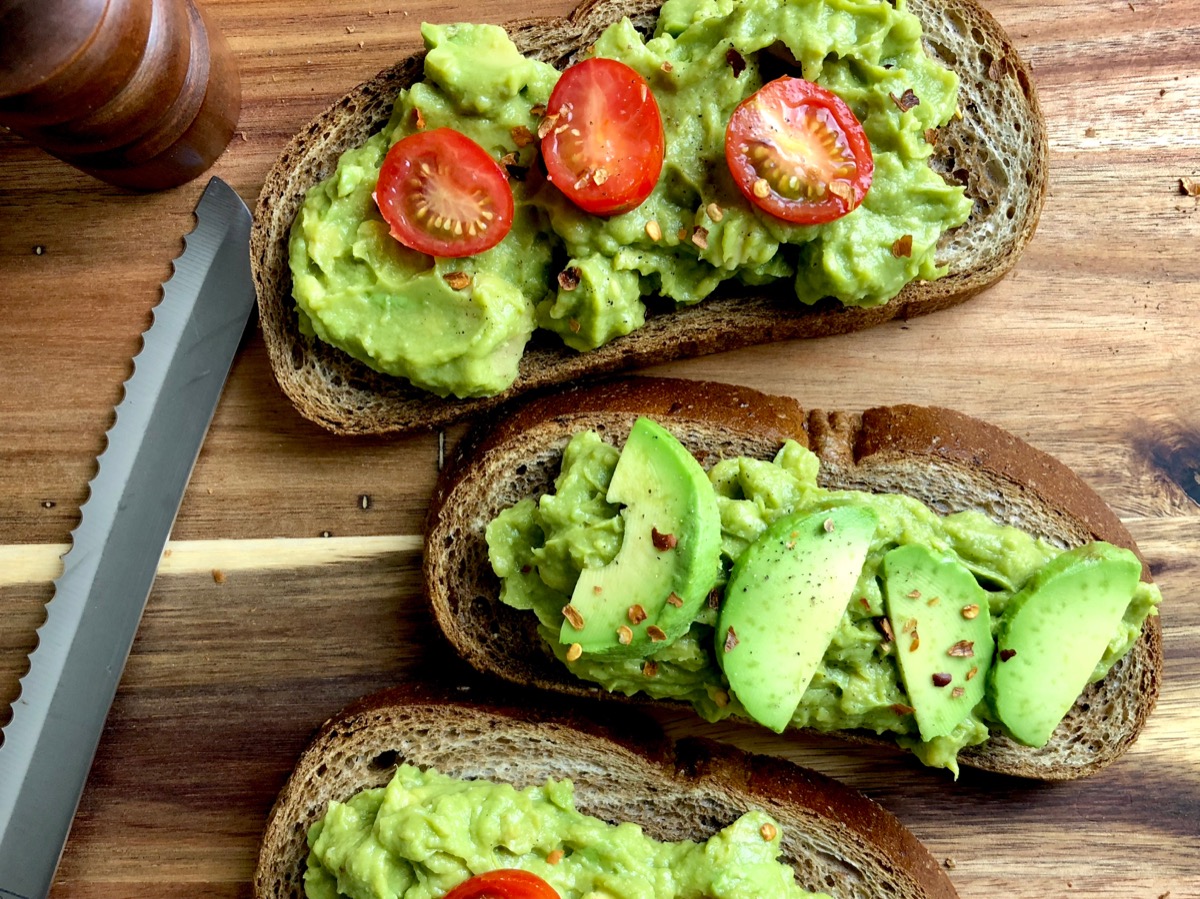
However, not everyone is on board with the recommendation to peel off the stem in the store. Farmers have countered this hack by explaining that it costs those in the industry precious produce—and may even put other shoppers at increased health risk of eating a spoiled avocado. Ramón Páz, a strategic advisor for Association of Avocado Exporting Producers and Packers of Mexico (APEAM), tells Avocadoland that avocado farmers use special clippers to get close to the fruit, but purposely leave a portion of the stem intact. “It is very important to keep part of the stem, because that prevents fungi and bacteria [from entering] the fruit,” Paz explains.
In other words, if the stem is already gone and you can see that there’s brown underneath, that’s reason enough to leave it at the store. If the stem is still intact, you should leave it that way or else risk ruining the fruit for someone else.
Always wash your avocado before cutting into it.
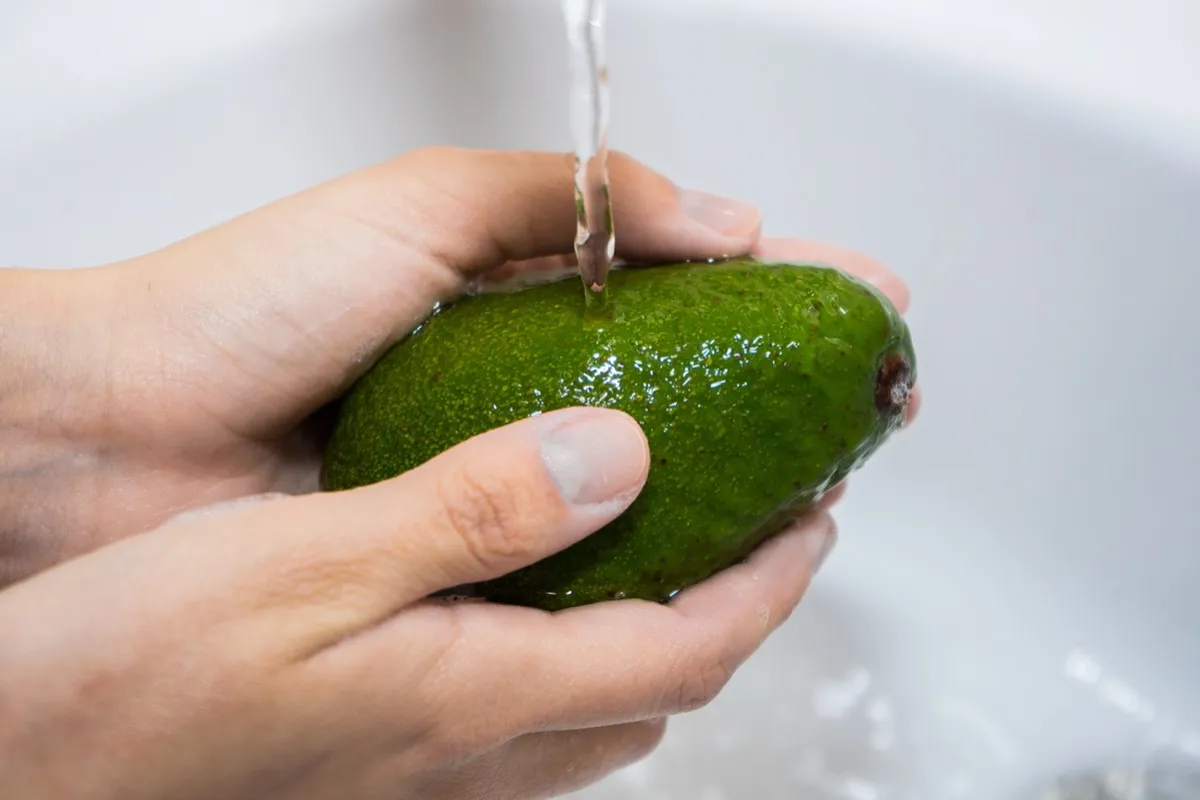
While it may be second nature to you to wash produce like apples or lettuce before digging in, you might not think to rinse your avocado before slicing into it—but you should.
In 2018, the U.S. Food & Drug Administration (FDA) released a report on its testing of 1,615 avocado samples between 2014 and 2016. The agency found that 0.74 percent of its samples tested positive for Salmonella, while 0.24 percent of the avocado flesh samples and 17.73 percent of the avocado skin samples tested positive for Listeria monocytogenes; these bacteria have been linked to serious illnesses and, in rare cases, death.
As such, the FDA recommends washing all avocados before use, as cutting them could introduce harmful bacteria into the fruit’s flesh.
RELATED: Never Wash These 4 Foods Before Cooking Them, CDC Warns.
If you notice certain types of discoloration inside your avocado, throw it away.
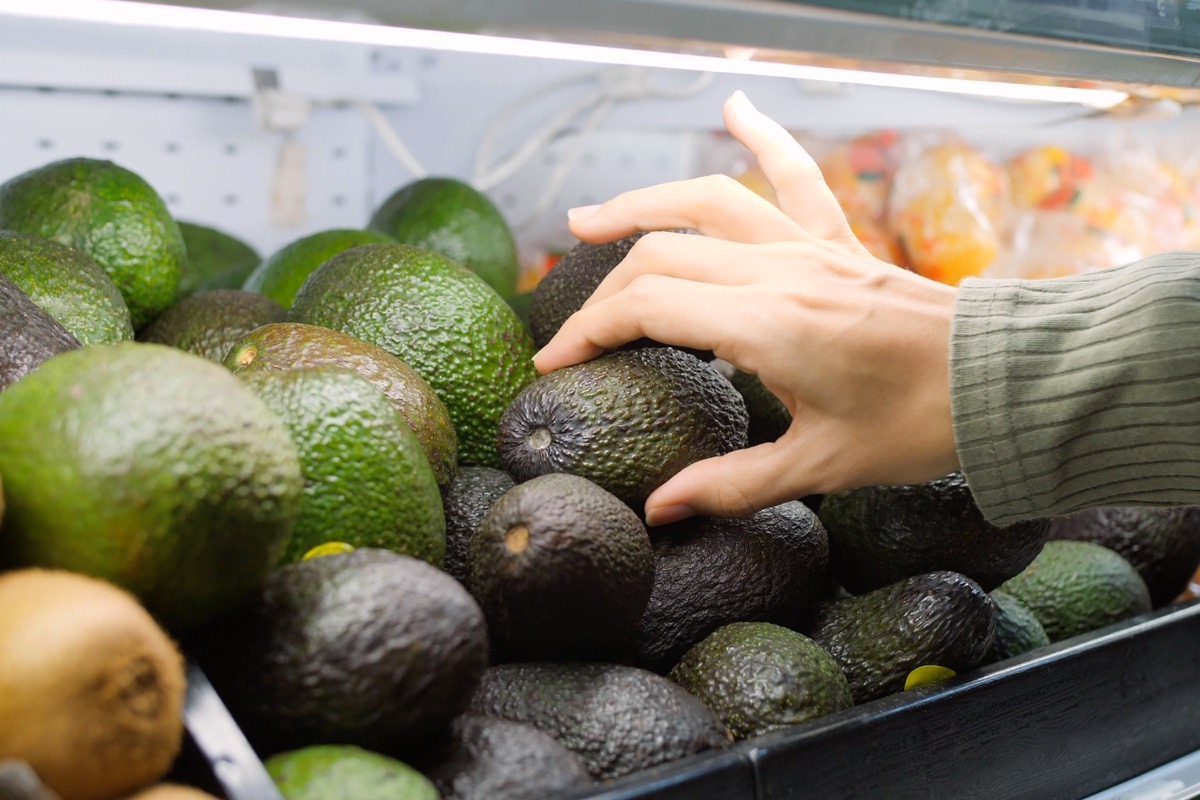
Much of the time, you can get all the information you need about an avocado from looking at it and gently feeling its texture. A ripe Hass avocado has dark green skin on the outside—as opposed to less ripened fruit, which is a lighter shade of green. Giving the avocado a gentle squeeze can also help you find an ideal specimen. Avocados that feel mushy or hollow are too old to eat, and those too firm to yield to gentle pressure are not yet ripe.
Once you’ve opened your avocado up, look for other signs of spoilage. Brown and black spots on the flesh, mold anywhere in or on the fruit, a stringy texture, and dark streaks can all suggest dangerous rotting or rancidity. “Don’t try to salvage any part of a rancid, sour-smelling, or moldy avocado, as it has the potential to make you sick,” advises Healthline.
For more food safety tips sent directly to your inbox, sign up for our daily newsletter.